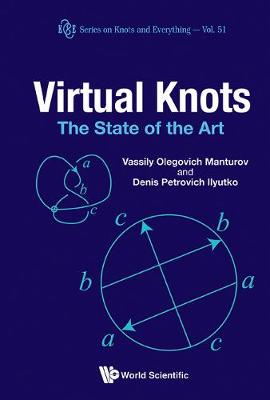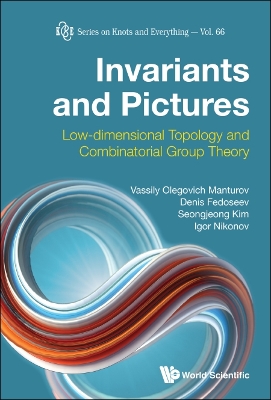Series on Knots & Everything
2 primary works
Book 51
Virtual Knots: The State Of The Art
by Vassily Olegovich Manturov and Denis Petrovich Ilyutko
Published 1 January 2012
The book is the first systematic research completely devoted to a comprehensive study of virtual knots and classical knots as its integral part. The book is self-contained and contains up-to-date exposition of the key aspects of virtual (and classical) knot theory.Virtual knots were discovered by Louis Kauffman in 1996. When virtual knot theory arose, it became clear that classical knot theory was a small integral part of a larger theory, and studying properties of virtual knots helped one understand better some aspects of classical knot theory and encouraged the study of further problems. Virtual knot theory finds its applications in classical knot theory. Virtual knot theory occupies an intermediate position between the theory of knots in arbitrary three-manifold and classical knot theory.In this book we present the latest achievements in virtual knot theory including Khovanov homology theory and parity theory due to V O Manturov and graph-link theory due to both authors. By means of parity, one can construct functorial mappings from knots to knots, filtrations on the space of knots, refine many invariants and prove minimality of many series of knot diagrams.Graph-links can be treated as "diagramless knot theory": such "links" have crossings, but they do not have arcs connecting these crossings. It turns out, however, that to graph-links one can extend many methods of classical and virtual knot theories, in particular, the Khovanov homology and the parity theory.
Book 66
This book contains an in-depth overview of the current state of the recently emerged and rapidly growing theory of Gnk groups, picture-valued invariants, and braids for arbitrary manifolds. Equivalence relations arising in low-dimensional topology and combinatorial group theory inevitably lead to the study of invariants, and good invariants should be strong and apparent. An interesting case of such invariants is picture-valued invariants, whose values are not algebraic objects, but geometrical constructions, like graphs or polyhedra.In 2015, V O Manturov defined a two-parametric family of groups Gnk and formulated the following principle: if dynamical systems describing a motion of n particles possess a nice codimension 1 property governed by exactly k particles then these dynamical systems possess topological invariants valued in Gnk.The book is devoted to various realisations and generalisations of this principle in the broad sense. The groups Gnk have many epimorphisms onto free products of cyclic groups; hence, invariants constructed from them are powerful enough and easy to compare. However, this construction does not work when we try to deal with points on a 2-surface, since there may be infinitely many geodesics passing through two points. That leads to the notion of another family of groups - nk, which give rise to braids on arbitrary manifolds yielding invariants of arbitrary manifolds.

